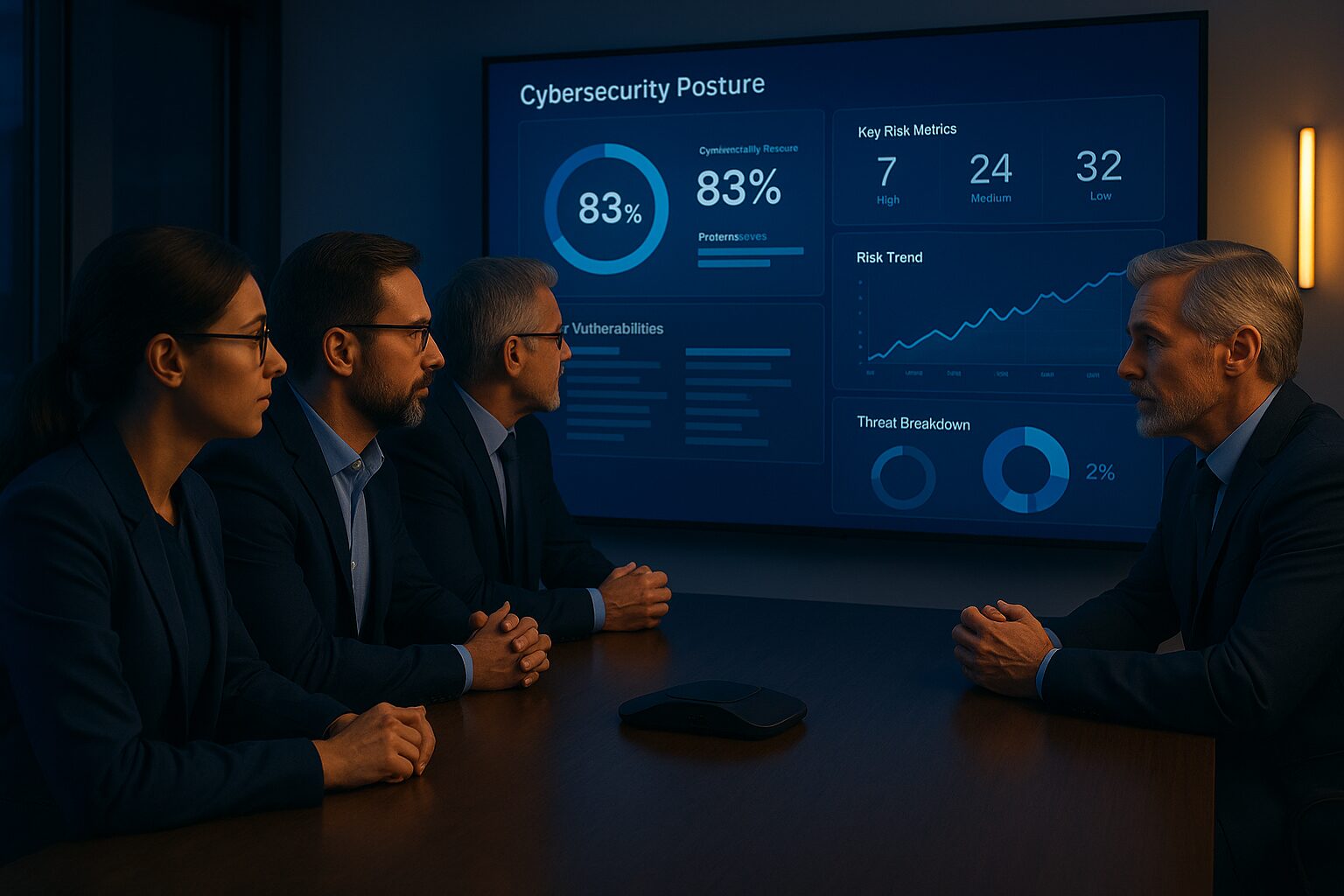Navigating HIPAA compliance can feel like walking a tightrope for healthcare IT leaders and compliance officers. You’ve likely heard about the need for a Security Risk Assessment (SRA) to satisfy HIPAA requirements. But what about the other risks your organization faces – from physical security gaps to operational hiccups or natural disasters? In this post, we’ll break down what a HIPAA SRA involves, how it differs from broader risk assessments, and why both are critical to your healthcare organization’s security and compliance posture. We’ll keep it conversational yet professional, so grab a coffee and let’s demystify these assessments together.
What is a HIPAA Security Risk Assessment (SRA)?
A Security Risk Assessment (SRA) in the HIPAA context is a mandatory evaluation of risks to electronic Protected Health Information (ePHI). In simpler terms, it’s a thorough check-up of your electronic health data and systems to see what could go wrong and how to prevent it. The HIPAA Security Rule explicitly requires covered entities and business associates to “conduct an accurate and thorough assessment of the potential risks and vulnerabilities to the confidentiality, integrity, and availability of ePHI” in their possession. In essence, an SRA is all about identifying where your ePHI lives, what could threaten it (whether hackers, employee mistakes, system failures, etc.), and whether your current safeguards are sufficient to protect it.
During an SRA, your organization (or a qualified assessor like Meriplex) will typically:
- Map Out ePHI – Identify all systems and locations where ePHI is created, received, maintained, or transmitted (from EHR databases and email accounts to portable devices and cloud storage).
- Identify Threats & Vulnerabilities – Consider what could go wrong in each area. This includes cyber threats (malware, phishing, ransomware), human errors or malicious insiders, equipment failures, and even natural disasters that could affect IT systems.
- Assess Current Safeguards – Document and evaluate the security measures already in place (encryption, access controls, backup systems, policies, etc.) and see if they meet HIPAA’s requirements.
- Determine Risk Levels – Analyze the likelihood of each threat exploiting a vulnerability and the impact if it did. This is essentially the “risk analysis” part of the process – often rating risks as low, medium, or high priority.
- Mitigation Planning – Prioritize the identified risks and develop a plan to mitigate them. For high-risk findings, you’ll want to implement new security measures or strengthen existing ones, then document everything you’ve done as part of your risk management strategy.
Figure: Example HIPAA Security Risk Assessment workflow. This process begins by identifying all sources of ePHI and mapping where that data flows. Next, the organization pinpoints potential threats (e.g. malware, unauthorized access) and vulnerabilities in systems and processes. The likelihood and impact of each threat exploiting each vulnerability are analyzed (often qualitatively, such as low/medium/high risk). Current security controls are evaluated to see if they adequately address the risks. Finally, risks are prioritized and mitigation steps (like adding encryption, training staff, improving backups) are implemented and documented to complete the cycle.
Why is the SRA so important? First, it’s a legal requirement – failing to conduct a proper SRA can lead to hefty penalties. In fact, the Department of Health and Human Services’ Office for Civil Rights (OCR) has stepped up enforcement on this front. In 2024–2025, OCR launched an initiative resulting in multiple settlement fines (nearly $900,000 across eight healthcare organizations) for non-compliance with the risk analysis requirement. OCR’s Director cautioned that not doing a thorough SRA “leaves health care entities vulnerable to cyberattacks, such as ransomware” and that knowing where your ePHI is and how it’s protected is essential for HIPAA compliance.
Secondly, beyond avoiding fines, an SRA is fundamentally about protecting patient data and your organization’s reputation. The objective is to spot weaknesses before a breach or incident occurs. If risks to ePHI aren’t identified and mitigated, the consequences can be dire: data breaches leading to costly notifications, loss of patient trust, downtime in patient care, and remediation expenses that far exceed the cost of doing regular risk assessments. (The average cost of a healthcare data breach in 2024 was around $9.8 million – a figure that underscores how much is at stake.) In short, the HIPAA SRA shines a light on your ePHI security posture, so you can fix issues proactively and maintain compliance and patient trust.
Ready to Strengthen Your HIPAA Compliance?
Beyond HIPAA: Physical, Operational & Business Continuity Risk Assessments
Performing an SRA focused on ePHI is not the end of risk management – it’s just one piece of a bigger puzzle. Think of it this way: HIPAA wants you to safeguard patient data, but what about safeguarding your patients, staff, facilities, and overall operations? Healthcare organizations face a spectrum of risks that extends beyond cyber threats. As the American Hospital Association points out, today’s environment demands preparation for “all forms of risk, including both cyberthreats and physical threats,” because both can imperil a hospital’s enterprise. In practice, this means you should be looking at broader risk assessments that cover areas like physical security, operational risks, and business continuity. Let’s briefly explain each:
- Physical Security Risk Assessment: This looks at the tangible, real-world safeguards for your facilities and hardware. Are your buildings and sensitive areas properly secured against intruders or thieves? How about protection against environmental threats like fires, floods, or power outages? Physical risks are very much intertwined with cyber risks – for example, an attacker stealing an unencrypted laptop, or a natural disaster knocking out your data center. A physical security assessment will evaluate things like door controls, alarm systems, camera surveillance, device storage and disposal procedures, and even the placement of equipment. Its goal is to ensure that the physical access to ePHI systems and critical infrastructure is controlled and resilient (which, incidentally, also ties into HIPAA’s Physical Safeguards requirements). As one security advisor noted, cyber and physical security need to be part of the same governance framework because both pose a risk to the entire enterprise.
- Operational Risk Assessment: These assessments take a broader organizational view. Healthcare operations are complex, involving not just IT systems but also clinical workflows, supply chains, staffing, and finances. An operational risk assessment asks, “What could disrupt our day-to-day operations or our ability to deliver care?” For instance, consider risks like: a critical IT system outage (beyond just ePHI systems), a vendor failing to deliver essential supplies or services, staff shortages or labor strikes, or process failures that could lead to errors in care. While some of these overlap with IT and security, many are about administrative and process reliability. Evaluating operational risks might involve scenario-planning for things like a pandemic (sudden surge in patients and strain on resources), or a major technology project failure. The point is to identify vulnerabilities in how the organization runs and put plans in place to mitigate them (e.g. cross-training staff, having backup vendors, performing regular drills). These are not explicitly required by HIPAA, but they are crucial for patient safety and organizational stability. Remember, a security incident is not the only event that can put patient data or lives at risk – something as simple as a power failure or a communication breakdown can be just as damaging if not anticipated.
- Business Continuity & Disaster Recovery Assessment: This type of risk assessment is all about keeping the lights on (and the care continuing) when bad things happen. In healthcare, downtime is more than an inconvenience – it can literally be life-threatening if it affects critical systems or patient care delivery. A business continuity risk assessment will identify potential events that could cause major disruption – anything from natural disasters (hurricanes, earthquakes) to prolonged power outages, cyberattacks that cripple systems, or even public health emergencies. It evaluates how prepared your organization is to withstand and recover from such events. For example, if a ransomware attack knocked out your EHR and scheduling systems, do you have manual procedures and data backups to continue operations? If a hurricane hits your region, have you protected key equipment and do you have an emergency operations plan for patient care? A well-designed continuity plan should consider your facility infrastructure, critical clinical and business operations, and regional risks so you can minimize downtime. It’s also about response: who steps in when, how you communicate during the crisis, and how quickly you can get back to normal. In summary, business continuity assessments ensure you have “resilience” – the ability to keep providing care and protecting your data under adverse conditions.
To illustrate the importance of looking at all these angles, consider that healthcare organizations must “balance keeping … patients and visitors safe while protecting their high-value equipment, property and confidential data.” In other words, you have to protect people and assets and information all at once. Focusing only on one type of risk (say, just the cyber side addressed by an SRA) could leave gaping holes elsewhere. For instance, you might pass a HIPAA audit for data security but fail disastrously if a fire or flood occurs and you have no contingency plan, or if an unvetted vendor causes a supply shortage that halts operations. Broader risk assessments complement the SRA by covering these scenarios, giving you a 360-degree view of your risk landscape.
Not Sure Where to Start?
Why Both Types of Assessments Matter for Healthcare Security and Compliance
By now, the difference between a HIPAA SRA and other risk assessments should be clearer. Simply put: SRA is a must-do for protecting patient data (ePHI) and complying with the law, while broader risk assessments are essential for protecting everything else that keeps your organization running safely and effectively. Both are critical, and they actually reinforce each other. Here’s why investing time and resources in both types of assessments pays off:
- Holistic Protection: Cybersecurity (as addressed by the SRA) and other enterprise risks are interrelated. A weakness in one area can cascade into another. For example, an inadequate backup power supply (a physical/operational issue) could turn a minor IT glitch into a major data loss incident, compromising ePHI availability – a direct HIPAA violation. Conversely, a phishing attack (cyber issue) could shut down systems and force you into emergency operations. Only by doing both an SRA and broader risk assessments can you ensure there are no blind spots. As the AHA’s cybersecurity advisor emphasized, hospitals need to manage intertwined cyber and physical challenges together for true continuity of care. In practice, this means your HIPAA SRA findings will inform your overall risk management, and vice versa. If SRA uncovers, say, that your backup systems for ePHI are inadequate, that feeds into your continuity planning efforts. If a business continuity assessment shows your clinic has no plan for a long network outage, that circles back into your SRA remediation (perhaps by adding redundant systems or better incident response procedures).
- Compliance and Beyond: Doing an annual SRA checks the HIPAA compliance box – but regulators (and your executive board) expect more these days. OCR’s heightened enforcement shows that paper compliance isn’t enough; you need real risk reduction. Meanwhile, insurers, accrediting bodies, and patients are increasingly asking if you have comprehensive risk management in place (not just HIPAA, but also preparedness for emergencies, etc.). By conducting broader risk assessments (for physical security, continuity, etc.), you demonstrate a commitment to best practices and due diligence beyond the minimum. This can improve your standing in audits, support your cyber insurance applications, and most importantly, reduce the chance of calamities that break compliance in the first place. Remember, a HIPAA SRA will help you avoid breaches of patient data – but a holistic risk program will help you avoid breaches and service interruptions, safety incidents, and financial losses. Both types together strengthen your overall security and compliance posture.
- Patient Safety & Trust: At the end of the day, healthcare is about patients. Both SRAs and broader assessments ultimately serve patient safety and trust. An SRA helps prevent breaches that could expose sensitive health information, preserving patient privacy and confidence in your practice. Broader risk assessments help ensure that your hospital or clinic can continue to care for patients under any circumstances, from keeping the doors open during a disaster to preventing violence or theft on the premises. When patients (and regulators) see that you take a comprehensive approach to risk management, it builds trust that you can keep their data and their person safe. This is especially vital in healthcare, where lives are on the line if things go wrong. In summary, both types of assessments matter because together they protect the two things healthcare must never compromise: patient data and patient care.
- Resilience and Confidence: Proactively assessing risks makes your organization more resilient. It’s not just about finding problems; it’s about demonstrating the ability to weather storms. Healthcare leaders who invest in both SRA and other risk assessments often report feeling more confident in their security and emergency readiness. Instead of dreading the next compliance audit or unplanned outage, they have actionable plans and safeguards in place. This kind of readiness can be a competitive advantage and a stress reducer for your team. It’s far better (and cheaper) to fix a leaky roof before the rainy season than to mop up a flood after the fact. Comprehensive risk assessments give you that foresight.
Compliance Deadlines Are Closer Than You Think
Conclusion: Strengthening Your Security Posture – Get Started with an SRA
Healthcare IT and compliance leaders have a lot on their plates, but understanding the different flavors of risk assessment is a big step toward peace of mind. A HIPAA Security Risk Assessment is non-negotiable – it’s the cornerstone of protecting ePHI and staying on the right side of regulations. Equally, don’t neglect the broader risk landscape: physical security, operational risks, and continuity planning are what keep your organization running day after day, especially when the unexpected strikes. By doing both kinds of assessments, you’re covering all your bases. You’re ensuring not only that you comply with the letter of the law, but also that you’re building a robust, resilient healthcare organization that can safeguard patient data and deliver care under any circumstances.
Now that you know the difference and why both matter, the next step is action. If you haven’t had an SRA performed recently (or ever), it’s time to get one on the calendar. This is where Meriplex can help shoulder the load. Meriplex specializes in conducting thorough HIPAA Security Risk Assessments for healthcare organizations, as well as advising on broader security and continuity strategies. Our experts stay up-to-date on the latest compliance requirements and threat trends, so we can identify gaps that you might miss and provide practical remediation plans. We’ll work with you in a conversational, consultative way – no heavy-handed tech speak, just clear insights and solutions tailored to your practice or hospital.
Don’t wait until a breach or disaster forces your hand. Take a proactive step now to strengthen your security and compliance posture. Request an SRA from Meriplex today and let us help you protect what matters most – your patients, your data, and your peace of mind. Contact us to schedule your Security Risk Assessment or to learn more about our comprehensive risk management services. Together, we’ll ensure your healthcare organization is not only HIPAA-compliant but truly secure and resilient in the face of whatever comes next.



